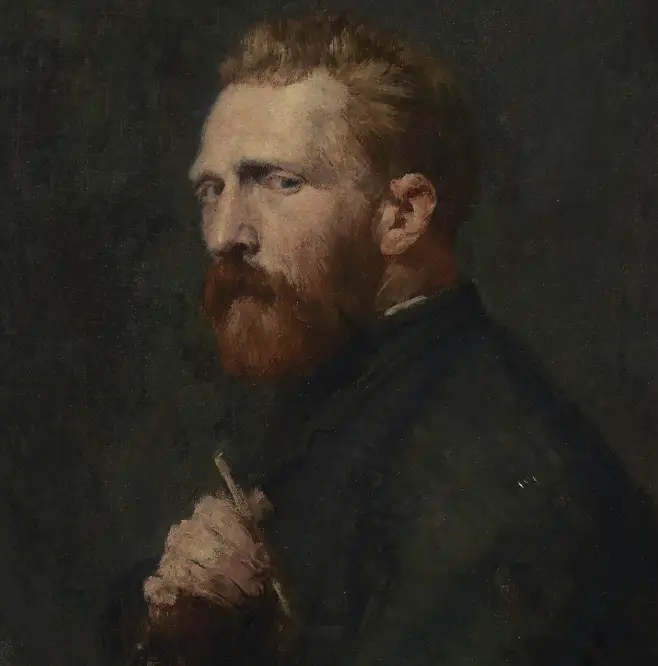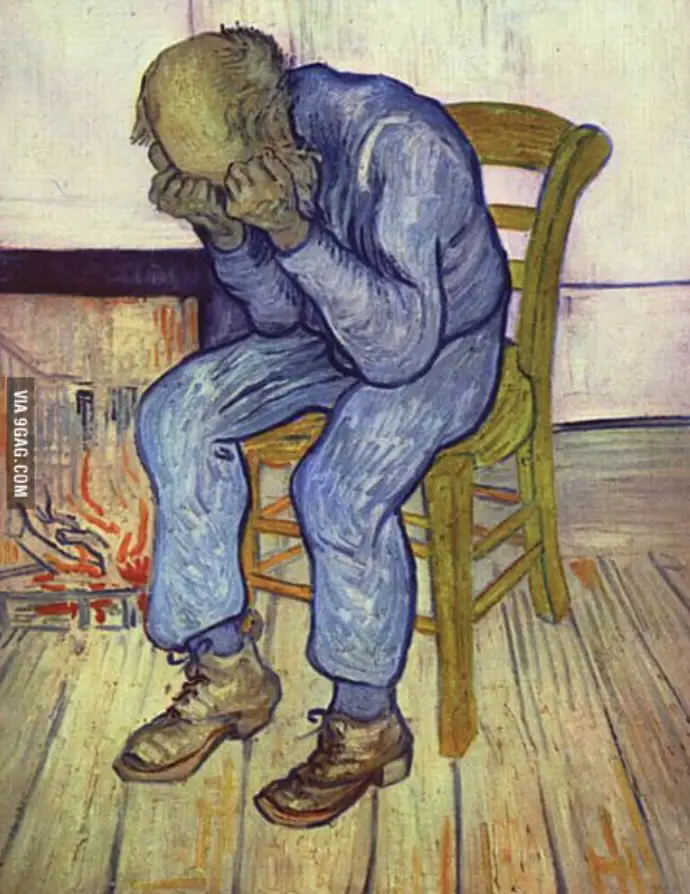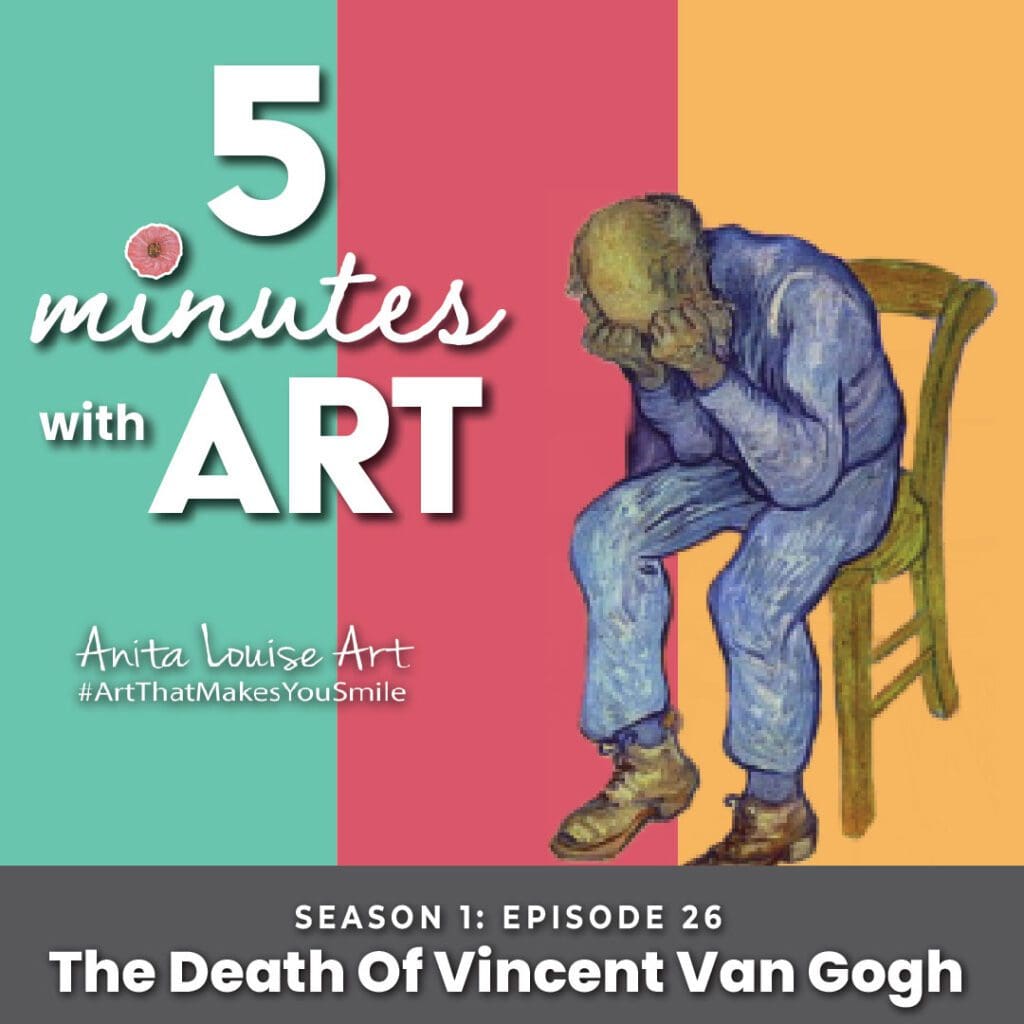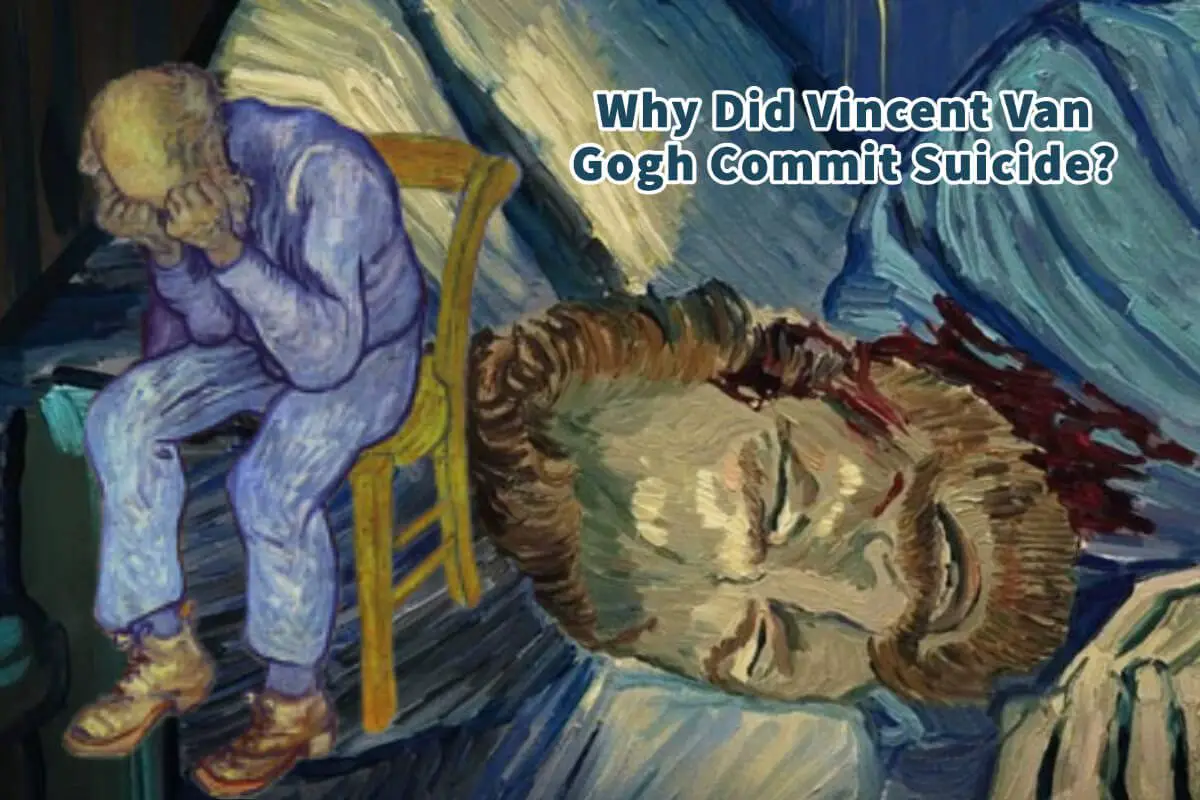One of the greatest artistic mysteries of the late 19th century is Vincent Van Gogh and his committing suicide. When we read and study Van Gogh’s life, we discover some reasons why he may have taken his own life.
Vincent Van Gogh had a mental illness; many believe he was manic-depressive. He was also sad and lonely and felt a huge financial burden. He committed himself to the mental hospital for treatment, but all this made it very difficult for him to do what he loved most, which was to paint.
Table of Contents
- Some Reasons Vincent Van Gogh Committed Suicide
- Frequently Asked Questions
- Related Questions
Some Reasons Vincent Van Gogh Committed Suicide
We can never honestly know or understand why another person may choose the act of killing themselves or taking their own life. Like many other people who have chosen this, we can try to pick up the pieces of Vincent Van Gogh’s life to discover some of the reasons why he may have chosen to commit suicide.

Van Gogh Could Have Had Manic Depression
Vincent Van Gogh was plagued by psychiatric illnesses his entire life. Medical evidence suggests that he was manic-depressive, a chronic mental illness affecting many people, including creative people.
Many of the drugs and therapy available today for manic depression were not available during the time of Vincent Van Gogh. At the same time, many drugs we use today to treat manic depression are also known to stifle creativity.
It is believed that Vincent Van Gogh was treated with a drug known as digitalis. People who receive large repeat doses of digitalis can see the world with a yellow-green tint. They can also complain of yellow spots surrounding their corneas, like the dots in Van Gogh’s painting The Starry Night.
In his painting of his physician Dr. Paul-Ferdinand Gachet, we can see in one of the three paintings Van Gogh painted of the doctor that he is holding a foxglove plant stem. The foxglove plant is known to be used to produce the digitalis drug.

Vincent Van Gogh Admitted Himself To the Asylum At Saint-Remy
Vincent Van Gogh understood he had some mental illness. That is why he admitted himself to the institution in Saint- Remy.
Just before Christmas in 1888, Vincent Van Gogh was 35 years old when he cut off his left ear. What started then was several months of hospitalization and other events that led to his neighbors signing a petition to have him be committed.
You can read about the many fascinating events that led up to his cutting off his ear and how that event spiraled down from there by reading ”What Ear Did Van Gogh Cut Off Left Or Right? And Other Facts” by clicking here.
Luckily Van Gogh never had to be forcibly committed, but he saw that the situation was worsening. Hence, he was committed to the Saint-Paul-de-Mausole psychiatric hospital in Saint-Remy in May 1889.
Vincent Van Gogh Was Feeling Very Sad And Losing His Will To Live
From many of the letters Vincent wrote to his brother Theo and others, we know how he felt about life; he was lonely. Van Gogh’s neighbors had signed a petition to get him committed.
He knew that he had a mental illness that was plaguing him. We know from his letters that he felt sad about life and that his will to live was waning.
In a letter to his brother Theo In May 1889, he wrote:
“Now the shock had been such that it disgusted me even to move, and nothing would have been so agreeable to me as never to wake up again. At present this horror of life is already less pronounced, and the melancholy less acute. But I still have absolutely no will, hardly any desires or none, and everything that has to do with ordinary life, the desire for example to see friends again, about whom I think however, almost nil. That’s why I’m not yet at the point where I ought to leave here soon, I would still have melancholy for everything. And it’s even only in these very last days that the repulsion for life has changed quite radically. There’s still a way to go from there to will and action.”
Vincent Van Gogh To Theo Van Gogh – 23 may 1889
Vincent Van Gogh Was Worried About Money
Even though Vincent Van Gogh is one of the most successful artists ever, he sold very few paintings in his lifetime; he depended on others, such as his brother Theo for support.
His brother Theo had gotten married. He had a wife and now a baby son to look after. Vincent was aware of his financial burden on everyone, especially his family members and brother Theo.
In a letter to Theo, he wrote:
“But no matter what one does, the question of money is always there like the enemy before the troops, and one can’t deny it or forget it.
Vincent Van Gogh To Theo Van Gogh – 23 may 1889
I retain my duties in that respect as much as anyone. And perhaps some day I’ll be in a position to repay all that I’ve spent, because I consider that what I’ve spent is, if not taken from you at least taken from the family, so consequently I’ve produced paintings and I’ll do more. That is to act as you too act yourself. If I had private means, perhaps my mind would be freer to do art for art’s sake, now I content myself with believing that in working assiduously even so, without thinking of it one perhaps makes some progress.”
Vincent Van Gogh understood he was a burden to his brother Theo and his family. He knew he was not selling paintings and felt he was in financial trouble.
Yet, at the same time, his illness stopped him from being as productive as he had hoped. Vincent Van Gogh stayed in the Psychiatric hospital for one year. He was feeling trapped in the hospital and was longing to be able to paint.
After he had been there for a year, he decided to move to Auvers, France, as he would be closer to his brother Theo. Dr. Gachet, who lived in Auvers, was asked to take care and watch out for Vincent.

Listen To Our Podcast About The Death Of Vincent Van Gogh by clicking here.
Vincent Van Gogh Found It Difficult To Deal With An Uncertain Future
Vincent Van Gogh found it increasingly difficult to deal with the uncertainty of his future. He depended on others for support, and he knew he was financially straining his brother Theo and his family.
He must have also felt a sense of failure in not seeing the financial rewards he hoped to see. And from his letters in his final months, we know he increasingly felt lonely and depressed.

Yet those same months when he felt so sad and lonely were also some of his most productive months. During his time in Auvers and until his untimely death, Vincent Van Gogh produced over 75 paintings and over one hundred sketches.
We never know what goes into another person’s mind for them to decide to kill themselves, but we do know that Vincent Van Gogh had a mental illness. We also know he was sad lonely and worried about finances.
All of these things, including the mental illness he was suffering, led to his untimely death.
When Vincent Van Gogh died, the world lost a great artist too soon.
Frequently Asked Questions
Why did Vincent Van Gogh struggle with mental illness?
Explore the factors contributing to Van Gogh’s mental health issues and how they might have influenced his decision to end his life.
What was Vincent Van Gogh’s diagnosis, and how did it impact his life?
Delve into the widely held belief that Van Gogh may have been manic-depressive and examine how this condition affected his personal and artistic life.
How did Vincent Van Gogh’s loneliness contribute to his mental state?
Investigate the role of loneliness in Van Gogh’s life, exploring his relationships and the emotional toll of his perceived isolation.
What financial struggles did Vincent Van Gogh face during his lifetime?
Explore the financial challenges Van Gogh encountered and how they may have added stress to his already complicated life.
Why did Vincent Van Gogh voluntarily commit himself to a mental hospital?
Understand the circumstances that led Van Gogh to seek treatment in a mental hospital and the impact it had on his ability to pursue his passion for painting.
How did Vincent Van Gogh’s mental health impact his artistic endeavors?
Examine the correlation between Van Gogh’s mental state and the evolution of his artistic style, shedding light on the complex relationship between art and mental health.
Were there specific events that triggered Vincent Van Gogh’s decision to take his own life?
Investigate any notable events or circumstances that might have served as catalysts for Van Gogh’s tragic decision.
Did Vincent Van Gogh receive adequate support from his family and friends?
Explore the level of support Van Gogh had from his social circle, examining whether the lack of a strong support system played a role in his struggles.
How did society perceive Vincent Van Gogh during his lifetime?
Analyze the societal attitudes towards Van Gogh and how they may have influenced his mental state and sense of self-worth.
What impact did Vincent Van Gogh’s suicide have on the perception of mental health in the art world?
Consider the broader implications of Van Gogh’s tragic end on the discourse surrounding mental health within the artistic community and society at large.
Anita Louise Art is dedicated to art education, great artists, and inspiring others to find and create their art. We love art that uplifts and inspires. #ArtToMakeYouSmile! #ArtToMakeYouHappy!
If you want to see any of my art, you can find out more by clicking here. If you are interested in what inspires me and my paintings, you can discover more by clicking here.
We have a free newsletter and would love you to be part of our community; you can subscribe to the newsletter by clicking here. If you have any questions, I would be happy to talk to you. You can reach me, Anita, by clicking here.
Subscribe to our Anita Louise Art YouTube Channel with great videos and information by clicking here.
Join us for our podcast “5 Minutes With Art.” Spend just 5 minutes a week with us to discover and learn about great art and artists. You can find out more about our podcast by clicking here.
Related Questions
How Does Van Gogh Sign His Paintings?
Vincent Van Gogh usually signed his paintings simply ”Vincent” with a line under his name. Sometimes he would add a date and others an inscription if the painting was for a friend. He usually signed his paintings on the left-hand side, but other times he signed his name on the object of the painting.
By clicking here, you can learn more by reading How Does Van Gogh Sign His Paintings?.
Why Are Vincent Van Gogh’s Paintings So Valuable?
Vincent van Gogh was an extremely prolific artist who painted over 900 works of art during his short lifetime. His work is appealing, and his use of colors and brushstrokes help make his art genuinely unique. He inspired many art movements and artists, and Van Gogh left us a legacy of not only his art but also his letters and thoughts.
By clicking here, you can discover more by reading Why Are Vincent Van Gogh’s Paintings So Valuable?
Doctor Who’s “Exploding Tardis” By Vincent Van Gogh – Fact Or Fiction?
The Exploding Tardis by Vincent Van Gogh is a fictional painting in the British television series Season 5. The painting is roughly based on Vincent Van Gogh’s Starry Night painting, but Vincent Van Gogh did not paint the painting. The Doctor Who story and this painting are entirely fictional.
By clicking here, you can learn more by reading Doctor Who’s “Exploding Tardis” By Vincent Van Gogh – Fact Or Fiction?.

